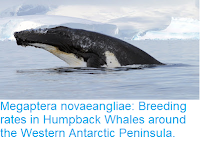Single-celled Algae of the genus Coccomyxa are global in distribution, and have been found in a remarkable variety of environments, including a pool used for cooling spent nuclear rods at a nuclear reactor, an acid lake in the Czech Republic where the waters reach pH 2.6, and regions at both poles with recorded temperatures as low as -88°C. These Algae can be free-living, found within the cells of Ginko leaves, act as a partner with Fungi within Lichens, or live upon the surface of Lichens.
In a paper published in the journal PhytoKeys on 2 November 2018, Shunan Cao and Fang Zhang of the Key Laboratory for Polar Science at the Polar Research Institute of China, Hongyuan Zheng, also of the Key Laboratory for Polar Science at the Polar Research Institute of China, and of the College of Environmental Science and Engineering at Tongji University, Fang Peng of the China Centre for Type Culture Collection at Wuhan University, and Chuanpeng Liu and Qiming Zhou of the School of Life Science and Technology at the Harbin Institute of Technology, describe a new species of Lichen-forming Coccomyxa, from the Fildes Peninsula of Antarctica.
The new species is named Coccomyxa greatwallensis, which appears to mean ‘from the Great Wall’, though no explanation is given. Cells of the new Alga were found living on the surface of the Antarctic lichen Psoroma hypnorum. The cells are green in colour and ovoid to ellipsoid in shape, measuring 6-12 μm in length and 3-5 μm in width. The Fildes Peninsula has a sub-Antarctic climate, with high precipitation, constant northwesterly winds, and an avarage summer temperature of 0.5-1.8°C.
The new species is named Coccomyxa greatwallensis, which appears to mean ‘from the Great Wall’, though no explanation is given. Cells of the new Alga were found living on the surface of the Antarctic lichen Psoroma hypnorum. The cells are green in colour and ovoid to ellipsoid in shape, measuring 6-12 μm in length and 3-5 μm in width. The Fildes Peninsula has a sub-Antarctic climate, with high precipitation, constant northwesterly winds, and an avarage summer temperature of 0.5-1.8°C.
Coccomyxa greatwallensis, light microphotograph. Cells cultured in BBM medium. Cao et al. (2018).







